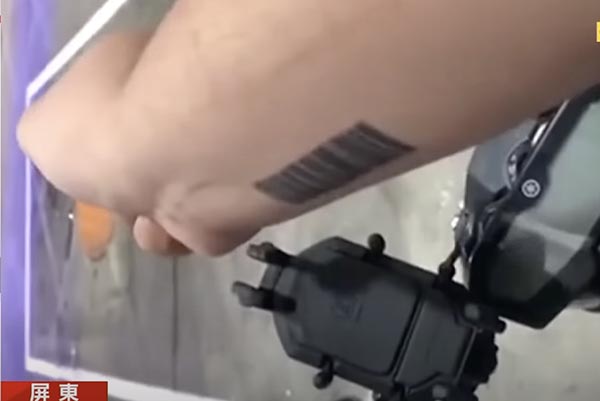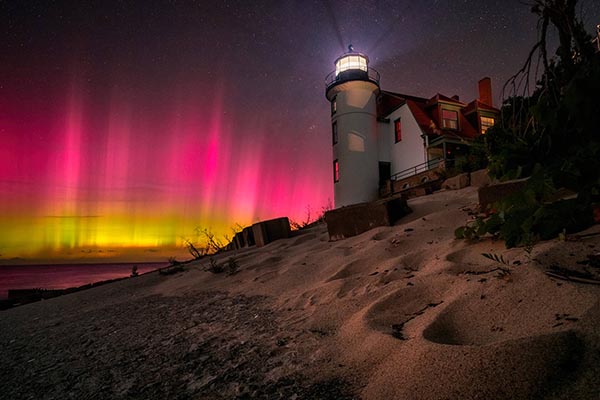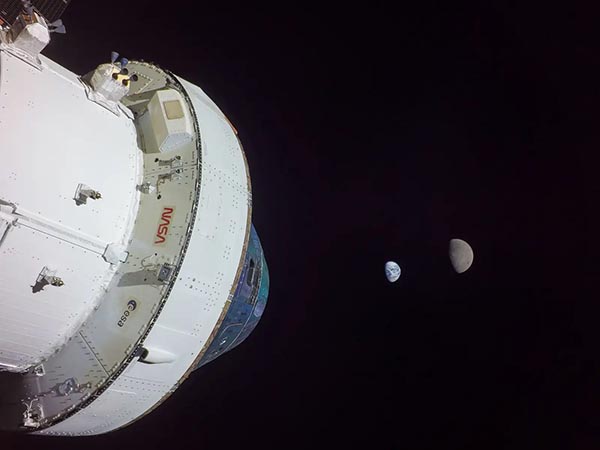Having Words
Apparently, the word of the year—according to the Oxford English Dictionary—is “goblin mode.” Unlike Merriam-Webster’s word of the year—“gaslighting”—we have never actually heard of the OED’s word of the year. Do we need to get out of the Around the Web bunker once in a while? Says the NY Times:
“Goblin mode” — a slang term referring to “a type of behavior which is unapologetically self-indulgent, lazy, slovenly, or greedy, typically in a way that rejects social norms or expectations” — has been named Oxford’s 2022 Word of the Year.
What, no “pilk”?
The Word of the Year is based on usage evidence drawn from Oxford’s continually updated corpus of more than 19 billion words, gathered from news sources across the English-speaking world. The selection, according to Oxford, is meant “to reflect the ethos, mood or preoccupations” of the preceding year, while also having “potential as a term of lasting cultural significance.”
Sounds like a sound methodology. Ah, but here’s the problem:
Normally, Oxford’s lexicographers assemble a list of words that had a statistically relevant surge, then choose one. This year, they took a more populist approach, announcing a short list of three — “goblin mode,” “#IStandWith” and “metaverse” — and then throwing it to a two-week online public vote.
Oh, that’s never a good idea. Just ask Boaty McBoatface.
The precise origins of “goblin mode” are murky. It popped up on Twitter as early as 2009, according to Oxford, but it went viral last spring, thanks to a satirical tweet featuring a fake news headline that quoted the actress Julia Fox saying that she and Kanye West broke up because he didn’t like it when she “went goblin mode.” (Fox later posted a denial on Instagram Stories, saying: “Just for the record, I have never used the phrase ‘goblin mode.’”)
Then again, the OED could just be gaslighting us.
Meanwhile, Back at Google
So we know what Merriam-Webster’s word of the year is (gaslighting), what the Oxford English Dictionary’s word(s) of the year is (um…goblin mode), but what was Google’s search of the year—or, that is, what were the most searched terms? (After the OED announcement we’d put odds on “goblin mode.”) As per Google’s Year in Search, the top overall searches were “Wordle,” “India vs. England,” and “Ukraine.” Top news searches were “Ukraine,” “Queen Elizabeth passing,” and “election results.” Johnny Depp was the most-searched person, although Amber Heard only comes in at #3.
A few feature was added to the Year in Search: the most-searched term “near me”—or within your general geographic area by entering your city of ZIP code.

How meta: now we’re going to have to search “pallas cat” to find out what that is.

No word on how often “capybaras wearing N95 masks” was searched. Amy?

Hours of fun—and when you are writing Around the Web, it counts as productive work!
Ad Nauseam
If you subscribe to the New York Times, you may have noticed that Tuesday’s edition had only one advertiser: GE. Says Axios:
For the first time in the paper’s 171-year history, today's print New York Times has only one advertiser — GE.
The print takeover includes 22 full-page color ads.
Why it matters: The partnership represents a shift at the Times from selling pages ad hoc to building big, interactive marketing campaigns.
The seven-figure campaign comes as GE begins a split into three publicly traded companies — GE HealthCare, GE Aerospace and GE Vernova (energy). GE HealthCare’s first investor day is Thursday.
It’s a one-off special issue, at least for now, but it does indicate the way that advertising is changing, especially for publications.
Tattoo You
Do you like the idea of contactless payment but hate fumbling with a mobile device? If so, why not do what, via Boing Boing, a gentleman in Taiwan did: tattoo a barcode on your forearm that can be scanned by a store checkout.

The code is linked to a cashless payment app on his mobile device and, if the video is to be believed, it actually works, which is a testament to the skill of the tattoo artist. He should hope that that particular cashless payment system never changes.
By the way, there is no truth to the rumor that Heidi Tolliver-Walker has a QR code tattoo that links to a holotwin.
Cleaning Up
Do you like photobooks? Cleaning things? If yes to both, here’s a book for you. Via Core 77, homeware brand Muji spend the pre-pandemic period sending photographers around the world to capture images of people cleaning things. The result is a 504-page photobook cleverly called Cleaning, filled with both photos and illustrations of people cleaning various things. Says Muji:
We had been wondering if the very essence of human beings lies dormant in the everyday and ordinary work of cleaning, which transcends culture and civilization.

You can check out images and video montages of cleaning here. Alas, the book is not yet available in the US.
Awe Rora
If you have ever witnessed the aurora borealis (aka Northern Lights) in person, we are terribly jealous. For those who haven’t, revel in Northern Lights Photographer of the Year’s 25 best aurora photos. (They also include images of the aurora australis, or Southern Lights, the southern hemisphere’s equivalent.)

Auroraverse” by Tor-Ivar Næss, Nordreisa, Norway
Auroras are the result of disturbances in the Earth’s magnetosphere caused by the solar wind. “These disturbances,” says Wikpedia, “alter the trajectories of charged particles in the magnetospheric plasma. These particles, mainlyelectrons and protons, precipitate into the upper atmosphere (thermosphere/exosphere). The resulting ionization and excitation of atmospheric constituents emit light of varying colour and complexity.”
Although witnessing the northern lights typically requires being close to or within the Arctic Circle (Scandinavia, Iceland, and Russia dominate the 25 images), the lower range of visibility is usually Seattle, Minnesota, or even Boston. This one was taken in Michigan:

Michigan Night Watch” by Marybeth Kiczenski, Point Betsie Lighthouse, Frankfort, Michigan.
When storms are especially strong, they can be seen even further south. CNN reports that in 2011, the northern lights were seen in Oklahoma City, Memphis, and Atlanta. And the BBC notes that during the “great solar storm” in August and September 1859, auroras were seen in Honolulu—a mere 21° north of the equator.
And the Traffic Lights Turn Blue Tomorrow
It’s being called “The Great Purpling.” According to Business Insider, something weird is going on with streetlights in Vancouver: they are turning purple. They’re not getting any dimmer—they illuminate the street just fine, and they don’t pose a safety hazard—it’s just strange. So the city dispatched utility trucks to replace the lights, which is a shame because they are still fairly new.
Like most other cities, Vancouver has spent the past few years switching from old sodium-vapor streetlights to LEDs. The new bulbs, basically arrays of computer chips that convert electricity to light, are cheaper, less power-hungry, and longer-lasting. LED streetlights are supposed to shine for the better part of a decade.
And they still will—they’re just purple. And, as it turns out, the Great Purpling is not limited to Vancouver.
Reports stretch back to 2020 and across the hemisphere — Wisconsin, North Carolina, Florida, New Mexico, California, even Ireland. “It’s something we began seeing about two years ago,” says Jeff Brooks, a representative for Duke Power, which is responsible for streetlights across the Carolinas and parts of Florida and the Midwest. “I’ve had people call and ask if this was because it’s Halloween, or because their football team in that area wears purple.”
Or tributes to Prince? So what’s the cause?
It has to do with how our eyes/brains perceive color—and how LEDs are manufactured.
If you mix equal parts red, green, and blue light, our eyes will read it as white. Now, red and green LEDs have existed since the middle of the 20th century. But blue turned out to be a challenge big enough that the guy who figured it out, Shuji Nakamura, won a Nobel Prize in 2014. The blue LED, with its narrow wavelength, enabled all sorts of modern tech, from the Blu-ray disc to flat-screen monitors.
So…
The big blue breakthrough also enabled engineers to create white LEDs that are both bright and cheap. That’s because they no longer actually needed the red and green ones to make white. A blue LED underneath a fancy ceramic-and-glass lens, impregnated with a yellow phosphor, would do the job. Our eyes see the blue-and-yellow mix as white. That was the big breakthrough — just wrap the blue LED chips in a complicated package of glass, sealant, solder, wires, and so on. Do it cheaply and reliably enough, and you’ve got yourself a global business.
And it’s the package that posed the problem. A company called Acuity Brands—specifically their American Electric Lighting sub-brand—supplied the purpling LEDs.
“The purple streetlights are a result of the phosphor coating delaminating from the LEDs,” says Fiona Hughes, a representative for the city of Vancouver. Brooks, of Duke Power, points to the same cause. “There’s a laminate on the fixture that gives it its white color,” he says. “As that laminate began to degrade, it caused the color tint to change toward purple.”
So, in turn, what caused the delamination? LEDs don’t give off much, if any, heat. But ambient temperature still changes.
The phosphor layer in an LED package, as it happens, is really sensitive to temperature changes. Even the tiniest mistakes in assembly or installation can make LEDs more likely to heat up. That can cause the edges of the phosphor coating to curl, peeling away from the LED chip and allowing more of the native blue to leak through. It can also change the chemical structure of the phosphor itself, which in turn would change the color the LED emits.
Ultimately, it comes down to quality control in manufacturing. Business Insider explores the greater implications.
It shines a light on how deeply LEDs, especially the cheap white ones, have become interwoven into the global economy. Sure, Acuity has probably fixed the issue and is replacing all the lights. But what happens next time some company in south China solders something wrong and a wave of broken tech propagates across the planet? It’s streetlights this time; next time it could be phones, TVs, medical devices.
Think about the hue and cry.
Graphene Has Muscle (or Vice Versa)
Was it a good week for graphene news? It’s always a good week for graphene news! Researchers from the Korea Advanced Institute of Science and Technology (KAIST), Pusan National University, and CNRS have used a graphene-based elastomer to create an artificial muscle that is 17 times more powerful than human muscle. Says Graphene-Info:
The researchers applied graphene to a liquid crystal elastomer material that contracts and expands depending on temperatures. The test prototype was capable of lifting a one-kilogram (2.2 pounds) dumbbell. An artificial inchworm created with muscle fiber moved three times faster than its living counterpart.
“Starting with this technological research, we can use practical artificial muscle materials in various sectors including robotics and wearables,” KAIST researcher Kim Sang-ouk said in a statement. He said that there had been artificial muscles with one or two outstanding material characteristics but there was no invention that had overall outstanding characteristics ideal for practical uses.
Everyone Knows It’s Grawindy
Do you love wind power? Sure, we all do, but it’s chief drawback is that when it’s not windy, the turbines, obviously, don’t spin. It’s second chief drawback is that the turbines tend to face one direction and don’t move dynamically as the wind changes direction. However, meet Grawindy, said to be the “next generation of wind technology.” Says Gina Chon of SEMAFOR Climate:
Designed on the principle of regulating moving parts similar to sails on a boat, the system is able to operate in low wind speeds with winds blowing in any direction, contrary to wind turbines. And the units, which swing with the combined effect of wind and gravity, don’t need to be oriented towards prevailing winds to generate power. They are also easy to put together and cheaper than regular wind turbines.
According to Grawindy, it can operate at wind speeds as low as 3 m/s.
Wrap Battle
Plastic wrap. We all use it, as it’s immensely useful. But, alas, it is essentially unrecyclable (although manufacturers will claim it is). Is there a decent alternative? Well, via Core77, Spanish kitchenware manufacturer Lékué now offers Reusable Flexible Lids. Made of platinum-cured silicone, they’re shaped like flexible yo-yos and come in different diameters.

And they go over open containers like thus:

OK, so yo-yo may not be the analogy that immediately comes to mind. At any rate, the diameters don’t have to be exact, just close, as the lids are elastic.
These flexible and reusable 100% platinum silicone lids can be used to store food airtight in the fridge, with no leakage of smells, keeping food fresher for longer.
The lids can be stretched to fit containers with different diameters. Perfect to keep containers, cans and even food like watermelons, oranges, onions… A hermetic seal is achieved by simply pressing down on the top.
1 Reusable flexible lid ø 11 cm. For diameters from ø 11 cm up to ø 14 cm.
1 Reusable flexible lid ø 15 cm. For diameters from ø 15 cm up to ø 18 cm.
1 Reusable flexible lid ø 20 cm. For diameters from ø 20 cm up to ø 24 cm.
A three-pack (which includes one of each of the three diameters) is a steal at $34.
Around the Webb Moon
NASA’s Artemis I, which is in the midst of a 25-day mission, is the first in a series of missions to send humans back to the moon, ideally on a more permanent basis. It launched on November 16 and is wrapping up its 25-day lunar foray with splashdown expected for December 11. The mission comprised the Orion spacecraft which did a close flyby of the moon—coming within 80 miles of the lunar surface—the point being to use the Moon’s gravity to slingshot the craft around the moon and back to Earth. Said NASA Administrator Bill Nelson, “When Orion re-enters Earth’s atmosphere in just a few days, it will come back hotter and faster than ever before – the ultimate test before we put astronauts on board. Next up, re-entry!”
This image, captured on November 25, marks a milestone: Orion had reached 268,563 miles(432,210 kilometers) from earth—its maximum distance from its home world. It is also the farthest a spacecraft built for humans has ever been. (Although unmanned this time around, Orion is designed to carry astronauts.)

Image credit: NASA
Although no humans are aboard, Orion does have two mannequins as crew—“Helga” and “Zohar”—which are designed to measure radiation levels. A third mannequin is also aboard to capture flight data. None of the mannequins are being played by Kim Cattrall.
Light Beer
Says Food and Wine: “Busch Light’s New ‘Bush Lights’ Will Make Your House the Talk of the Neighborhood This Holiday Season.”
But we suspect not in a good way.
“Busch Light Bush Lights” are, as Busch explains, “exactly what they sound like,” a chance to drape “electric glowing cans” across the greenery in your front yard (though in a promo video, Busch Light jokes that these lights are “only for bushes”). Each string contains 150 flashing cans and even plays an electronic version of the brand's classic “Head for the Mountains” jingle – in case you felt like the cans themselves wouldn’t draw enough attention.

For a touch of real class, just chuck empty beer cans in your bushes. If you want a set, how do you go about procuring them?
Busch Light is asking interested decorators to send a literal letter to the Anheuser-Busch Brewery (at One Busch Place, St. Louis, Missouri 63118) from now until December 21 explaining why they’d like a set. Or unlike Santa, Busch is also willing to take digital requests. Simply leave your explanation as a comment on one of Busch Light’s Facebook, Instagram, or Twitter posts with the hashtag #letterstostlouis #sweepstakes
We’ll send a figurative letter and play it by ear.
Did anything catch your eye “around the Web” this week? Let us know at [email protected].
This Week in Printing, Publishing, and Media History
December 5
1791: Austrian composer and musician Wolfgang Amadeus Mozart dies (b. 1756).
1901: American animator, director, producer, and screenwriter Walt Disney born.
1901: German physicist and Nobel Prize laureate Werner Heisenberg born. Of that there is no uncertainty.
December 6
1877: The first edition of The Washington Post is published.
1953: Vladimir Nabokov completes his controversial novel Lolita.
1955: American actor, comedian, and screenwriter Steven Wright born.
December 7
43 BC: Roman philosopher, lawyer, and politician Cicero dies (b. 106 BC).
1902: German-American cartoonist Thomas Nast dies (b. 1840).
1923: American actor and comedian Ted Knight born.
1930: W1XAV in Boston, Massachusetts telecasts video from the CBS radio orchestra program, The Fox Trappers. The telecast also includes the first television commercial in the United States, an advertisement for I.J. Fox Furriers, who sponsored the radio show.
December 8
65 BC: Roman soldier and poet Horace born.
1861: American businessman, and founder of General Motors and Chevrolet, William C. Durant born.
1894: American humorist and cartoonist James Thurber born.
1951: American essayist, travel and science writer Bill Bryson born.
1962: Workers at four New York City newspapers (this later increases to nine) go on strike for 114 days.
1980: John Lennon is murdered by Mark David Chapman in front of The Dakota in New York City.
2013: Metallica performs a show in Antarctica, making them the first band to perform on all seven continents. (Master of Penguins?)
2019: First confirmed case of COVID-19 in China. And so it begins.
December 9
1608: English poet and philosopher John Milton born. (“There goes paradise,” said his mother.)
1793: New York City’s first daily newspaper, the American Minerva, is established by Noah Webster.
1897: Activist Marguerite Durand founds the feminist daily newspaper La Fronde in Paris.
1906: American admiral, computer scientist, and designer of COBOL Grace Hopper born.
1960: The first episode of Coronation Street, the world’s longest-running television soap opera, is broadcast in the United Kingdom.
1965: A Charlie Brown Christmas, first in a series of Peanuts television specials, debuts on CBS.
1968: Douglas Engelbart gives what became known as “The Mother of All Demos,” publicly debuting the computer mouse, hypertext, and the bit-mapped graphical user interface using the oN-Line System (NLS) at the Association for Computing Machinery/Institute of Electrical and Electronics Engineers (ACM/IEEE)—Computer Society's Fall Joint Computer Conference in San Francisco.
1979: The eradication of the smallpox virus is certified, making smallpox the first of only two diseases that have been driven to extinction (rinderpest in 2011 being the other).
December 10
1520: Martin Luther burns his copy of the papal bull Exsurge Domine outside Wittenberg's Elster Gate.
1768: The first edition of the Encyclopædia Britannica is published.
1815: English mathematician and computer scientist Ada Lovelace born. Working on Charles Babbage’s Analytical Engine, she s often considered the first computer programmer. (She was also the only legitimate daughter of Lord Byron.)
1830: American poet and author Emily Dickinson born.
1851: American librarian and educator, creator of the Dewey Decimal Classification Melvil Dewey born.
1884: Mark Twain’s Adventures of Huckleberry Finn is published.
1909: Selma Lagerlöf becomes the first female writer to win the Nobel Prize in Literature.
1936: Italian dramatist, novelist, and poet Nobel Prize laureate Luigi Pirandello dies (b. 1867).
1946: American newspaperman and short story writer Damon Runyon dies (b. 1884).
December 11
1918: Russian novelist, historian, short story writer, and Nobel Prize laureate Aleksandr Solzhenitsyn born.
1972: Apollo 17 becomes the sixth and final Apollo mission to land on the Moon.










Discussion
Join the discussion Sign In or Become a Member, doing so is simple and free